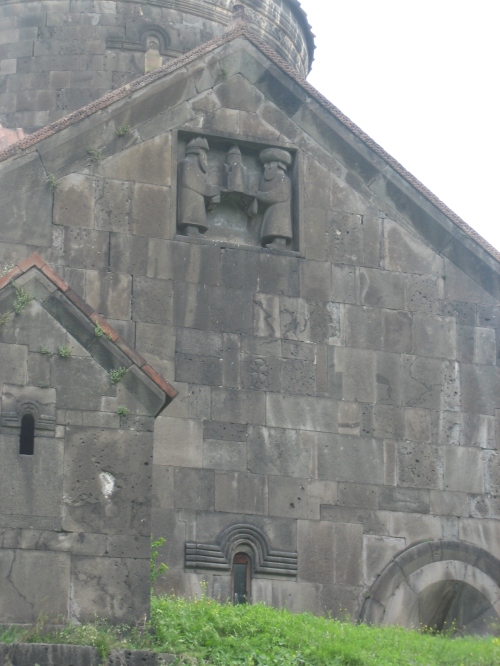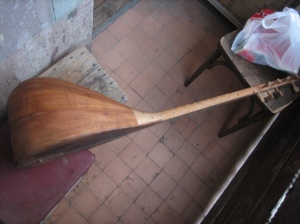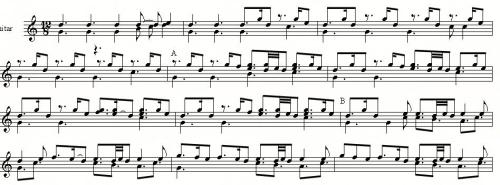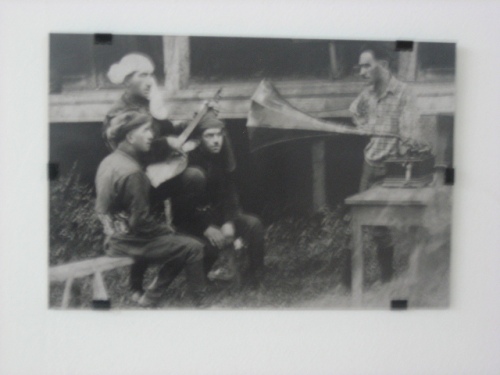This weekend we traveled south of the Georgian border to the small copper mining town of Aleverdi, Armenia. We saw multiple churches, ancient bridges, monasteries, as well as your less typical tourist fare; multiple dead dogs, bee hives, and Soviet-era abandoned gold mining factories. Its a great coincidence, and in no way a result of planning on my part, that on the hills above the town of Aleverdi are the Sanahin Monastery and the Haghpat Monastery. Seeing these two Monasteries turned out to be a good follow up to one of my previous posts. Sanahin Monestary, pictured above, is the place where the poet and musician Sayat Nova trained to become a monk. The Haghpat Monestary is where he served and died. He was killed in 1795 by the invading army of Mohammad Khan Qajar, the Shah of Iran, for refusing to denounce Christianity and convert to Islam. I wrote about him and the movie “The Color of Pomegranates” in this early post:
https://caucascapades.wordpress.com/2012/01/09/sayat-nova-and-the-color-of-pomegranates/
It turns out that multiple scenes from the movie where filmed at the Haghpat Monestary. After coming back home to Tbilisi, I rewatched Sergei Parajanov’s film and recognized a few shots:
Here’s a photo I took this past Saturday:
And here are a few still shots from “The Color of Pomegranates” :
I also took this photo of Anna cooling off in this fountain outside the Monastery:
And then found this in the movie:
The Church also has a plaque commemorating Sayat Nova:
 Anna translated the Russian portion of the plaque above (and learned some interesting new volcabulary- did you the Russian verb постригать – “to become a monk”, also means “to cut your hair”?)
Anna translated the Russian portion of the plaque above (and learned some interesting new volcabulary- did you the Russian verb постригать – “to become a monk”, also means “to cut your hair”?)
” 1775-1795 The great Armenian poet and musician Arutyun Sayat Nova was forced to become a monk. He stayed and kept watch in this monastery in the capacity of senior priest. ”
We spent the rest of the day wandering around the town meeting Armenians, all of whom were friendly and even more hospitable than they as a people are renowned for. One woman stopped us as we were walking up to some ruins and made us coffee, gave us treats, talked with us about the financial situation in Armenia and the US, and let me take pictures of all her bee hives:
Another man and his son’s friend made us coffee at their apartment and the younger one taught me to play the Armenian version checkers, a game I still do not completely understand. I lost every time, even though he would switch pieces with me when I was about to lose. They had a music room with a piano and a Saz, which I was very excited to find. This is one of the instruments Sayat Nova was supposed to have played, according to my guide at the Tbilisi Museum of Musical Instruments and Folk Music.
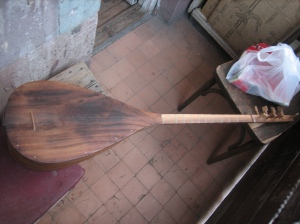
 Finding this instrument was perfect because a few weeks ago I discovered a short documentary on one of the last Turkish Saz luthiers and have wanting to post it, but had no justifiable reason to until now.
Finding this instrument was perfect because a few weeks ago I discovered a short documentary on one of the last Turkish Saz luthiers and have wanting to post it, but had no justifiable reason to until now.
– Ben


